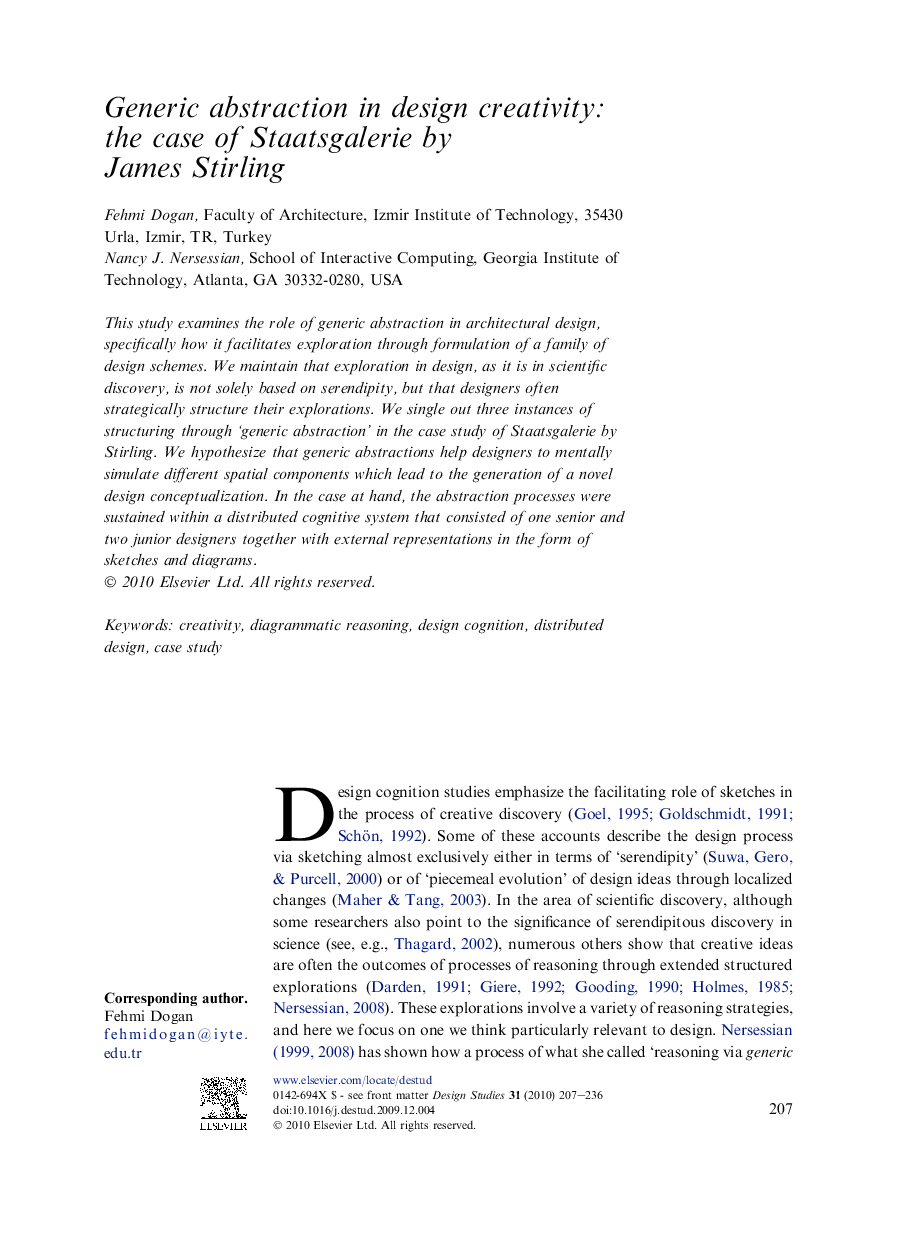| Article ID | Journal | Published Year | Pages | File Type |
|---|---|---|---|---|
| 261809 | Design Studies | 2010 | 30 Pages |
This study examines the role of generic abstraction in architectural design, specifically how it facilitates exploration through formulation of a family of design schemes. We maintain that exploration in design, as it is in scientific discovery, is not solely based on serendipity, but that designers often strategically structure their explorations. We single out three instances of structuring through ‘generic abstraction’ in the case study of Staatsgalerie by Stirling. We hypothesize that generic abstractions help designers to mentally simulate different spatial components which lead to the generation of a novel design conceptualization. In the case at hand, the abstraction processes were sustained within a distributed cognitive system that consisted of one senior and two junior designers together with external representations in the form of sketches and diagrams.
